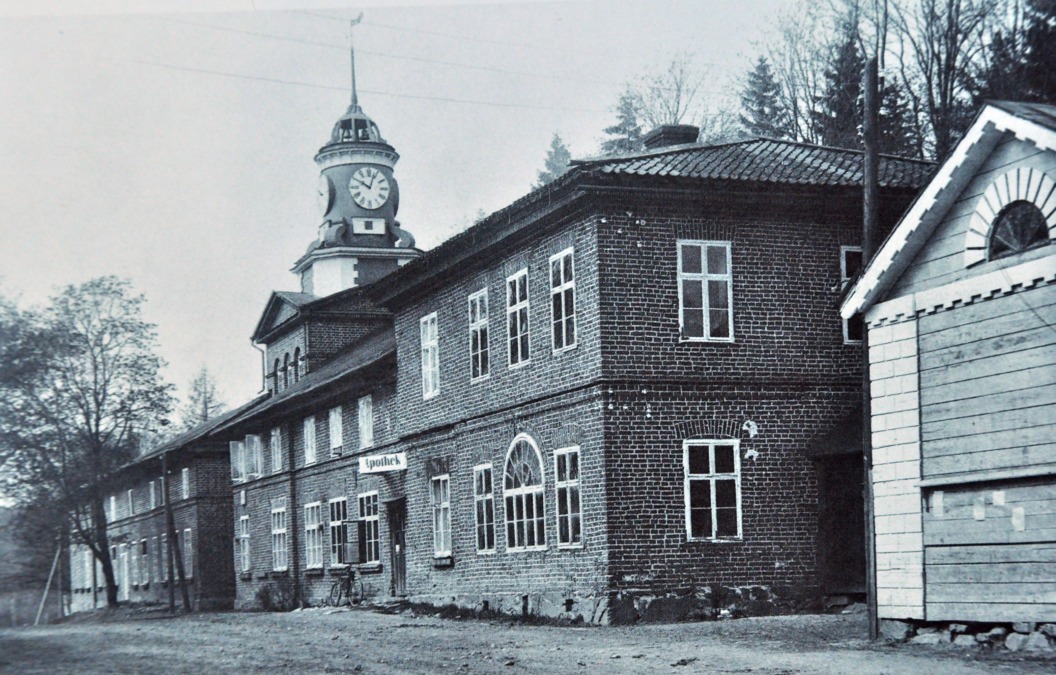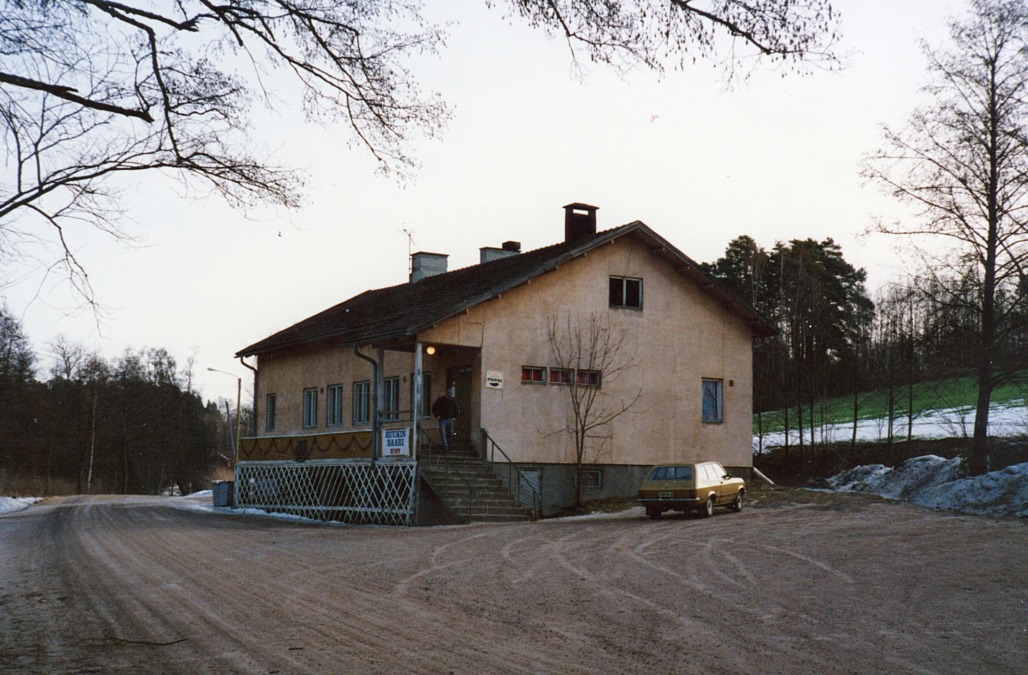Slowly but surely, the day-to-day life in Fiskars started to change. As the workplaces disappeared, the village went silent. But this change didn’t happen all at once and during most parts of this period life continued as usual. Certain parts of the society were affected earlier than others, because it was mainly the younger generations who moved away while the older ones, for the most part, stayed behind. For example the Swedish speaking school was closed down in 1971, when Swedish became weaker in relation to the growing Finnish speaking population in Fiskars, and the Finnish school moved into the building where the Swedish school had been.

The sports clubs and the fire brigade upheld the traditions of the ironworks. Aside from their usual functions they arranged multiple parties and events, which were traditional to the ironworks. It was customary for the fire brigade’s brass orchestra to play during the traditional Midsummer party in Baklura. The performance was so important to some of Fiskars’ villagers that they stopped participating in the party when the orchestra stopped performing during the beginning of the 1970s. The sport clubs’ activities changed with the depopulation, and especially Fiskars Swedish speaking sporting club (Fiskars IF) was affected when the Swedish speaking population shrank. The Finnish speaking workers’ association, Fiskarsin Työväen Urheilijat (FTU) was able to keep the number of members stable, and the association is still active to this day, now renamed Fiskarsin urheilijat –47 (FU-47).
There was a kindergarten in Fiskars long before the state legislated municipal daycare during the 1970s. The pharmacist’s wife Tora Lönegren initiated the daycare activities, according to directions from Mannerheim League for Child Welfare, in the pharmacy building’s spaces which today are used by Onoma. Svea Olsen started as a helper at the kindergarten before her own children were born, probably during the late 1940s or the early 1950s. Svea later assumed the kindergarten when it moved to Solbacken (Snålbacken). Svea ran the daycare’s activities as late as the 1980s, by then with the help of Disa Ström. During all those years many Fiskars children were a part of the daycare, which helped the working parents by caring for their children.
For a long time there were a lot of services to be found in Fiskars ironworks. Until 1973 the municipal surgeon, Leo Laqvist, was stationed in Fiskars and until 1975 there was a pharmacy in the Clock Tower Building, whereafter medicine could be picked up from a self-service medicine cabinet. At the start of the 1980s there were still two grocery stores, a chemical store, a library, a health care center and a post office in the ironworks. About ten years later the population had risen while the amount of services had been reduced. Varuboden had closed its local store in 1990, whereafter the villagers had to be content with only one grocery store. The following year the post closed its Fiskars office, and the Fiskars villagers had to travel to Pojo village for their postal business. In Kansankeittiö, moe commonly referred to as ”Kuppila”, the Fiskars villagers gathered. During the day it was a cantina for the ironworks’ workers, and during the evenings one could enjoy a beer there. Durig the 1990s it went under the name Ruukin baari and before the building was demolished there was a pizzeria there.

Fiskars Kyläseura – Fiskaras Byförening r.f. was registered in 1986 to care for the ironworkers interests, the ironworks’ traditions as well as the populations cohesion. The decision to found the association was hurried when the last public sauna in the ironworks was ordered to close down. The village association adopted a firm stance on the ironworkers’ access to public bathing. Despite this, the sauna was closed down, but the need for the association remained. A lot happened in the ironworks that the association involved itself in. Important services moved away, among other things the bank, self-service medicine cabinet and the chemical store. The association arranged a wide variety of events for the members and developed the local tourism services.
The annual parties were part of the association’s successes. The May bonfire and the Midsummer dance had, due to their popularity, grown to a size which was no longer sustainable from the perspective of safety. Because of this there was a need for an event for just the ironworks’ own population. The traditional parties were reshaped and the annual moonlight dance (Kuutamotanssi) became Kuubamot. Today the village association is an umbrella organisation for a large part of the ironworks’ associations with considerable youth activities. The issue that started the association in the first place, the protests against the closed sauna, was resolved in 2004 when the association built a public sauna by Liljenkonvaljholmen (fi. Kieloniemi) by the Degersjö lake’s beach.
